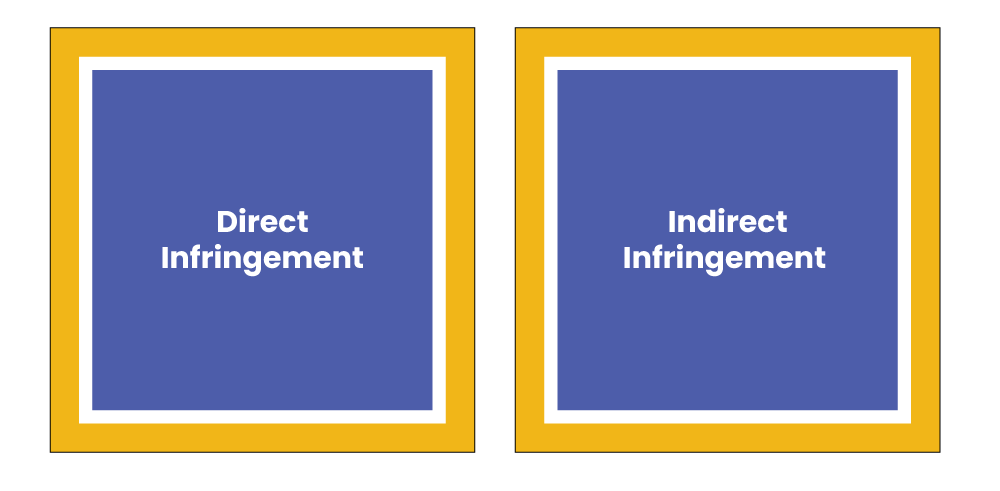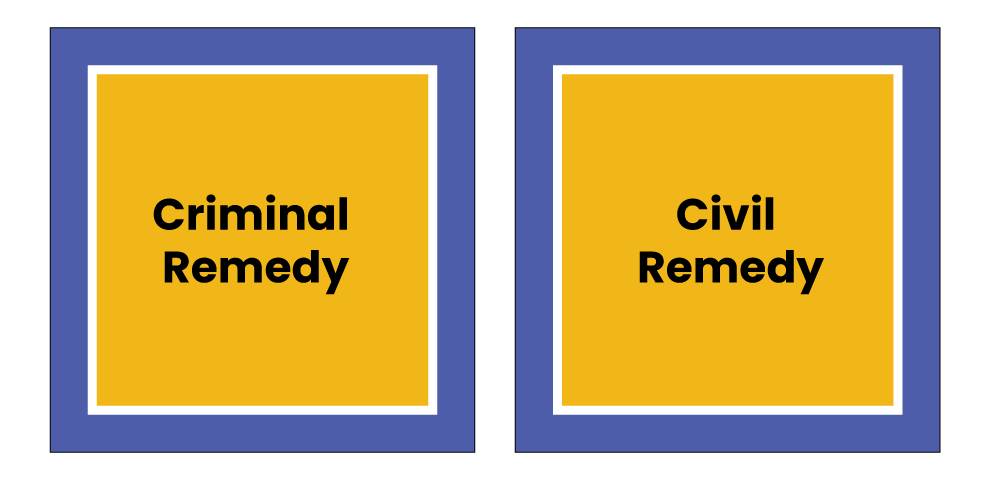Trademark Infringement is illegal to use of a Trademark by any unauthorized person or third party, which is deceptively similar or matching to an already registered Trademark.
The word deceptively similar means that when a customer looks at the mark, it will get confused with other registered Trademark. The provisions of Trademark Infringement primarily concentrate on three primary objectives of any individual who is using the registered mark; however, it is not the registered user of the Trademark.
Get a quote from Kanakkiyal in less than 24 hours.
All the registered Trademarks are safeguarded under the Trade Marks Act, 1999. This Act provides for the provision dealing with registration, protection, and fines for Trademark Infringement in India. The Trademarks all around the world are given the status of IP (Intellectual Property). Many organizations, both national and international, are working for the safety of Intellectual Property (IP) like Trademarks. The IPO or Indian Patent Office is an organization in India that is functioning for Trademark Protection. The Controller General of Trademark, Design, and Patent is the administrator of the IPO in India.
In other terms, Trademark Infringement is illegal to use a Trademark by any unauthorized person or third party, which is deceptively similar or matching to an already registered Trademark. The word deceptively similar means that when a customer looks at the mark, it will get confused with other registered Trademark. Hence, such confusion will impact the registered Trademark products & services.
The provisions of Trademark Infringement primarily concentrate on three primary objectives of any individual who is using the registered mark; however, it is not the registered user of the Trademark. You can check the three primary objectives below:
Moreover, Trademark Infringement can also be instigated by an advertisement. The advertisement must take biased advantage of the registered Trademark and also harms the originality and uniqueness of the registered Trademark. If the visual picture and spoken use of some words affect the reputation and uniqueness of a registered Trademark, then it will be amount to Trademark Infringement.
In the case of advertisement, many courts have explained what can create Infringement. In the case f Hindustan Unilever Limited vs Reckitt India Ltd., the defendant company has represented the Dettol soap (appellant company) as normal soap in the advertisement of Lifebuoy soap. The ordinary soap in the advertisement permits the germs to enter the skin through the pores of skins. The appellant claimed that such an advertisement is damaging their reputation and goodwill of their company’s product. The appellant competed that the general customers would identify the familiar features of Dettol soaps even if their logo is not shown in the advertisement. The court gave a ruling in favour of the appellant that the ordinary public can see the advertisement and probably refer to Dettol as an unsuccessful soap.
There are two different types of Trademark Infringement, and you can check the same below:

1. Direct Infringement
It is defined under the Trademark Act, 199 (Section (29)). There are some factors that must be fulfilled before any direct breach occur. Following are the elements:
The Infringement of a registered Trademark happens only when the usage of a Trademark is done by an individual who is not authorized or illegal by the owner of a registered Trademark. Therefore, the usage of the Trademark by an individual who is authorized or legal by the registered Trademark owner will not amount to the Trademark Infringement.
The Act provides remedies to all the Trademarks which are registered with the Trademark Registry. In case of any violation of an unregistered Trademark, the Trademark Act, 1999 will not apply. The general law of passing off is used in the conditions of unregistered Trademarks. Passing off is a misdeed law used where harm or injury is caused to the goodwill connected with the activities of other individuals or groups of individuals.
The Trademark being used by the unlawful individual or person must be either matching or deceptively similar to the registered Trademark of the actual owner. The significance of the term deceptively similar is that the general customer may get confused between two similar Trademarks and may think that both Trademarks are similar. The term may tell that it is only needed to prove that there is a chance of such confusion, and hence no need to prove the real happening of such confusion. A simple chance of misrecognition of the Trademarks is efficient to prove that there is a Trademark Infringement of a Products or services of a registered Trademark.
The illegal person or individual should use the Trademark for the circulation of goods and services which comes under a similar category or class of products/services under which the unique Trademark is registered. In this situation, it will be only considered as a Trademark Infringement of a registered Trademark.
2. Indirect Infringement
Under the Trademark Act, 1999, there is no such provisions that deal with this type of Infringement specifically. Therefore, it cannot be said that there is no liability for this Infringement. The Comprehensive Principle of Law provides for the application & provisions of Indirect Infringement. Such principles hold not only responsible for the principle infringer but also hold accountable the person who encourages or assists the infringer for Infringement. Also, there are two different types of Indirect Infringement, and you can check the same below:
Following are some essential features of Contributory Infringement:
a) When the individual know about the Infringement;
b) When an individual encouraged the principle infringer for committing Infringement;
c) When an individual materially contributed to direct management.
There is no such exception available in the case of this Infringement as there is no possibility of the contributory infringer acting in good belief.
According to the Trademark Act, 1999 (Section 114), any company or entity promising an offence under this Act will be responsible. The company will be accountable as a whole, and it means that all the individuals are responsible for the offence. Therefore, it can be said that only the principal infringer but every individual of the company will be responsible for Indirect Infringement. An exclusion from Vicarious Liability is given to an individual who acted in good belief and without any understanding of Infringement. Following are some vital element of Vicarious Infringement:
a) When an individual is regulating the activities of the principle infringer;
b) When an individual is originating monetary benefits from Infringement;
c) When an individual had aware of the Trademark Infringement and still participated in such Infringement;
The only exclusion to such liability for the company that is responsible for Infringement is when the entity or company can prove that the company has performed in good belief and had no idea regarding the Infringement.
There are two different types of remedy available for Trademark Infringement. The applicant has the option to begin any one or both of the proceedings against the defendant. Following are the two types of remedies:

1. Criminal Remedy
The remedies uttered by the court to the Trademark infringer in case of criminal proceedings are as follows:
2. Civil Remedy
In the case of Trademark Infringement, civil remedies are as follows:
Harms in the form of profits gained from the goods or services by Infringement will be given;
The destruction of Goods and services can also be ordered for the Trademark Infringement is done;
Harms or damages in the form of compensation will be given to the registered Trademark owner;
The court can pass interlocutory injection to discover documents, restraining the defendant from placing any assets that can cause a severe effect on the plaintiff and preserve infringing products and services. An injection is an order which will limit the use of the infringing Trademark.
The court can order temporary reliefs, which consist of an order for:
a) For removal and search of infringing goods, preparation of account books, inventory, etc., the appointment of a local commissioner;
b) To confine the infringer from dealing with or disposing of assets, which can have a severe effect on the applicant’s ability to recover costs and damages which will be awarded to the applicant.
The court can order the defendant to tolerate the cost of proceedings of the appellant.
Following is the procedure to obtain remedies for Infringement under Criminal and Civil Law:
1. Procedure Under Criminal Law:
2. Procedure Under Civil Law
A case under Section 134 of the Trademark Act can be filed in the District Court in case of Trademark Infringement; the jurisdiction of the district court shall be there where the Head Office of the plaintiff is located or the place where the cause of action has arisen. For suit under Section 134 of the Act, Section 20 of CPC doesn’t apply to the filing of such a lawsuit.
The court, if thinks appropriate, can pass the following order:
A Trademark is a name, symbol, word, logo, phrase, or slogan used by one venture on goods /services or other articles of trade to differentiate it from other identical or similar goods and services initiating from a different undertaking.
For new application there are given forms depending on the application such as Form TM-1, TM-2, TM-3, TM-4, TM-8, TM-8, TM-51, TM-52, TM-64, TM-65, TM-66, TM-67, TM-68, and TM-69.
An owner of a registered Trademark who believes its mark is being violated or infringed by any unauthorized person, then he or she can file a civil action in either central court or state court for Trademark Infringement.
The most general defences to such Infringement, partial competition and Trademark dilution suits consist of Trademark misuse, descriptive & nominative fair use, laches, fraud in attaining the Trademark Registration and application of the 1st Amendment.
Robust Trademarks are unique and distinct, normally without representing where the company functions or what it sells. Such marks are not easy to duplicate without Infringement appearing obvious.

Click the button and enter your details in the appearing form. We will contact you within 24 hours to schedule a free consultation call and discuss your needs.
Get a quote from Kanakkiyal in less than 24 hours.